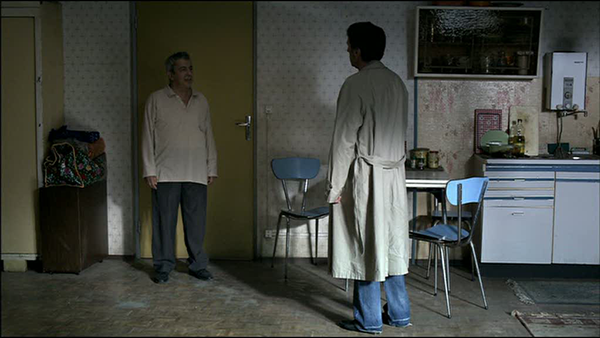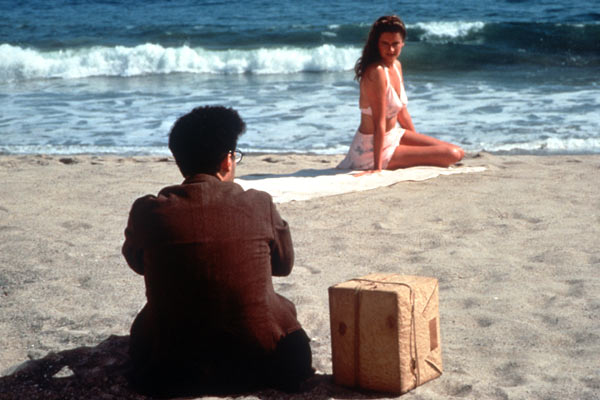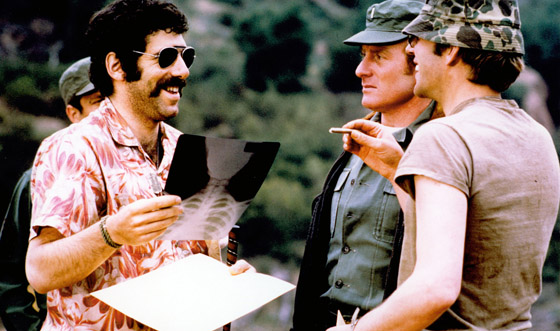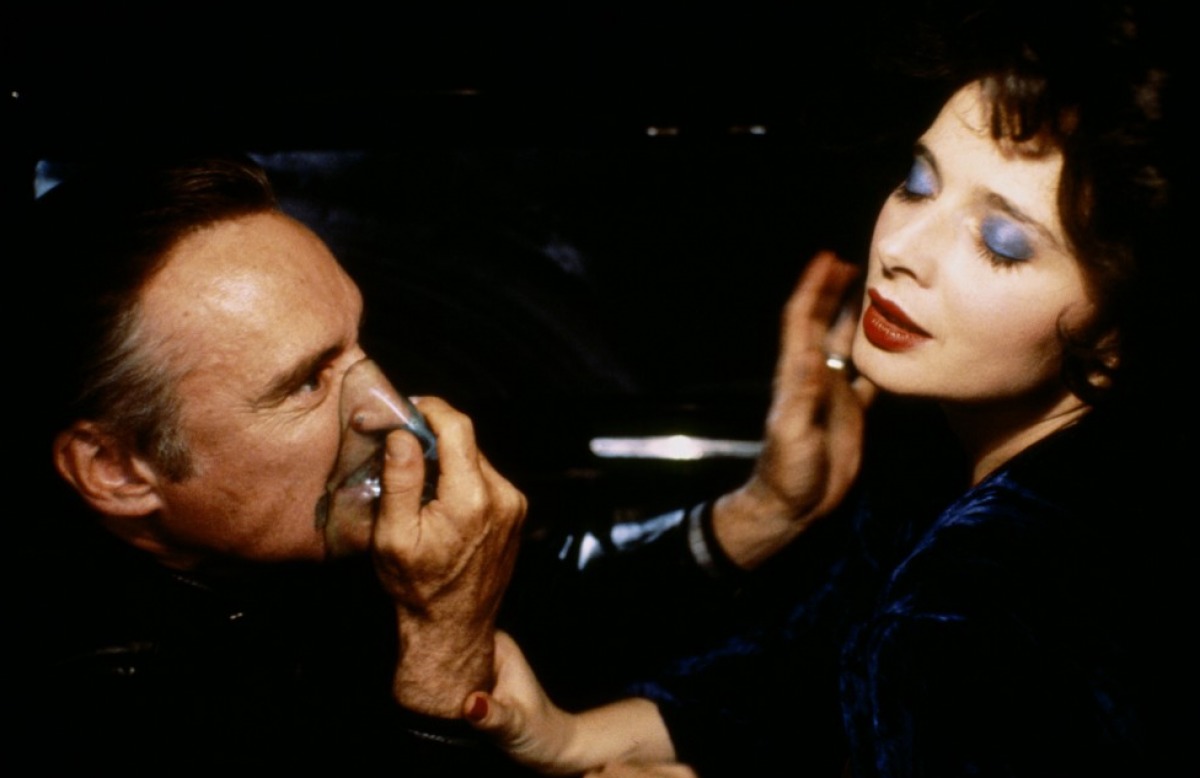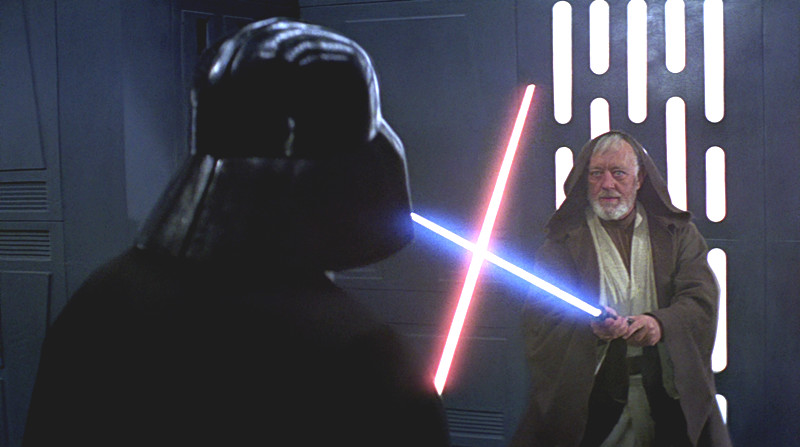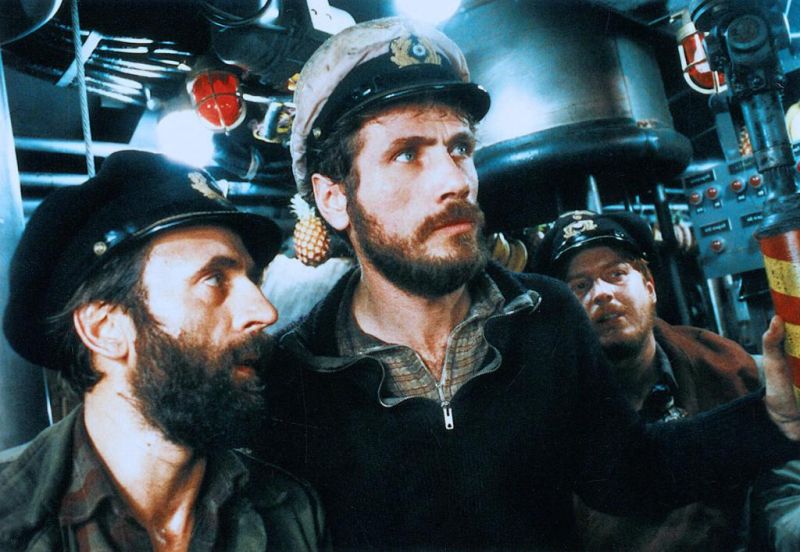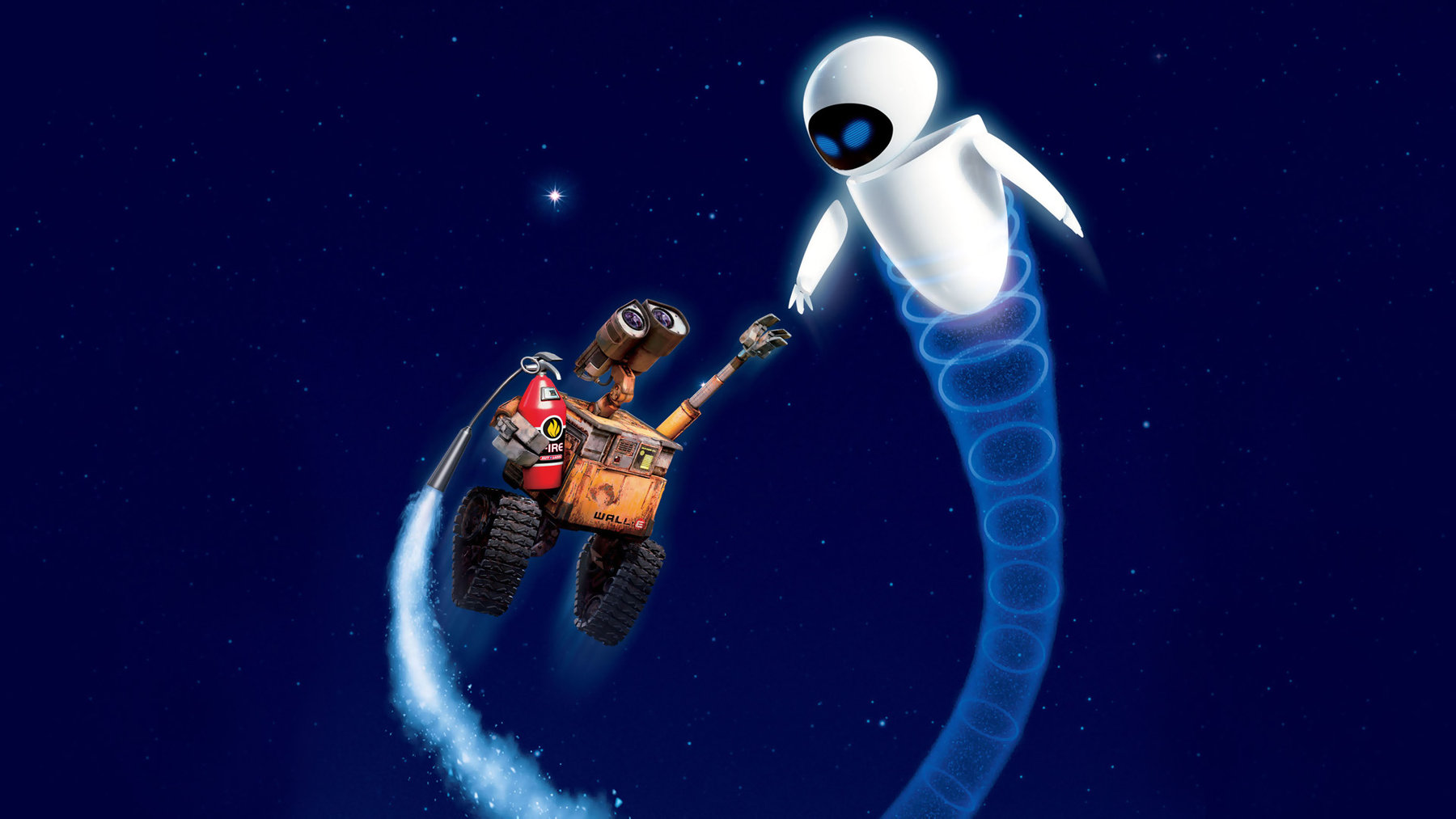14. Caché (Michael Haneke, 2005)
Haneke, like Fassbinder, has a special interest in our social relationship with media. “Caché” is defined commonly as a thriller, but some of the scenes play totally as a horror film. Haneke plays with the background sounds in different ways.
For example, in exterior shots everything sounds curiously low, especially in the quite static shots of the house. In interiors, this low volume plays on a bigger level, making every step or movement the only sound we can hear. The terrible suicide scene is almost hard to watch, and it is in part because of how empty the background sound is and how all we can hear is a knife cutting the neck.
13. Barton Fink (Coen Brothers, 1991)
Heavily influenced by Polanski’s apartment trilogy, the Coen Brothers took the idea of placing psychological sounds offscreen even further than in “Repulsion”. In the film, John Turturro plays a playwright moving to Hollywood to write films. In the middle of this cynical world, his apartment turns into a hell where his neighbor’s sounds make the task of writing an impossible one.
The sound design work of the film was obsessive, with composer Carter Burwell and sound designer Skip Lievsay experimenting with different ideas and methods for each scene. One of them consisted of pairing film sound and music in different frequencies.
If the exterior sounds were low vibrations and voices, then Burwell would add a high-pitched violin. If he used a counter bass, then Lievsay would make the wall sound sharp and annoying. The Coen Brothers’ screenplay allows these experiments, of course. The whole film is placed inside Barton’s head, and everything we hear is kind of real, but also distorted by his paranoia and fears.
12. MASH (Robert Altman, 1970)
Most of the directors and films on this list are recognized because of their conceptual ideas and for their way to work sound in the post-production phase. The case of Robert Altman is special for quite the opposite: Altman was the master of using and recording direct sound. Altman developed different techniques to record sounds and dialogues at the same time, and different ways to hide microphones from the camera.
In his large cast ensembles, you can hear everybody talk if they are inside the frame, sometimes overlapping between them and turning an effort to understand certain conversations. This realistic approach to sound turns into a very strange experience for the spectator who is not used to hearing different voices at the same time onscreen. “Mash” is just one example of this technique, but it also features different jokes related to sound.
11. Blue Velvet (David Lynch, 1986)
Like Robert Altman, David Lynch is a filmmaker who always gave special attention to sound design, and almost any of his films could make the list. Maybe his greatest work on sound was pairing with Alan Splet. The opening scene of “Blue Velvet” is a perfect example of the use of Foleys and sound distortion as an artistic expression.
The film opens with the ballad “Blue Velvet” and images of a perfect and clean neighborhood, until one of the neighbors suffer a stroke. The camera goes down into the grass in the garden and starts to dig deeper and deeper. The scene is disturbing by itself, but is only complete in combination with the distorted sound of grass and the disgusting effect of different insects’ sounds. The background sound plays a major role as well.
In Lynch’s films, it’s difficult to find a street that sounds like a normal street. Instead of that we have a constant low noise meant to keep us disturbed. This sound is everywhere in “Blue Velvet”.
10. Star Wars (George Lucas, 1977)
The first appearance of the sound designer screen credit was given to Ben Burtt for his work in “Star Wars”. Even if the concept didn’t properly exist at the time, George Lucas had to find a name for the kind of work that Burtt developed for the film.
Burtt spend an entire year experimenting with sounds that may sound suitable for a sci-fi revolution, but instead of trying everything on a synthesizer, he tried every sound he could in a studio. From motors running to hitting metal things, Burtt developed the art of Foley before it was an established work. Even now the sounds of “Star Wars” are recognized as the trademark work for sci-fi.
9. Das Boot (Wolfgang Petersen, 1981)
War films are often recognized for their work on Foley design. Bullets, explosions and bombings are recorded under different ingenious techniques, because it is obviously cheaper and faster to record these elements with different tools inside a studio. The case of “Das Boot” required even more inventiveness considering all the sounds are underwater.
The mix in the film and frequency editing plays a major role in creating a submarine feeling. How would a crew experience weapons and war horror inside a submarine? All of this work is imagined in Petersen’s film with an impressive result.
8. Wall-E (Andrew Stanton, 2008)
How can wind be recorded? If you put a microphone directly against it you will have a useless interference sound. Ben Burtt, the same sound designer from “Star Wars”, had a fabric pulled against a carpeted floor to record the wind in “Wall-E”. Sound design in animation has an interesting plus over live action because everything has to be created later. Being incapable of recording on location for obvious reasons, the sound designers have to create everything.
“Wall-E” was Burtt’s first work on an animated film, and gave him the same freedom he experienced in “Star Wars”. He created the robot noises with different tools, but he couldn’t replicate his strategy for “Star Wars” due to the different audiences of both films. Some of Burtt’s ideas used on the film included destroyed cars at derby for Wall-E’s trash compression, a slinky hit with a timpani stick for Eve’s plasma gun, and the Mac starting sound for Wall-E’s advice of full batteries.
